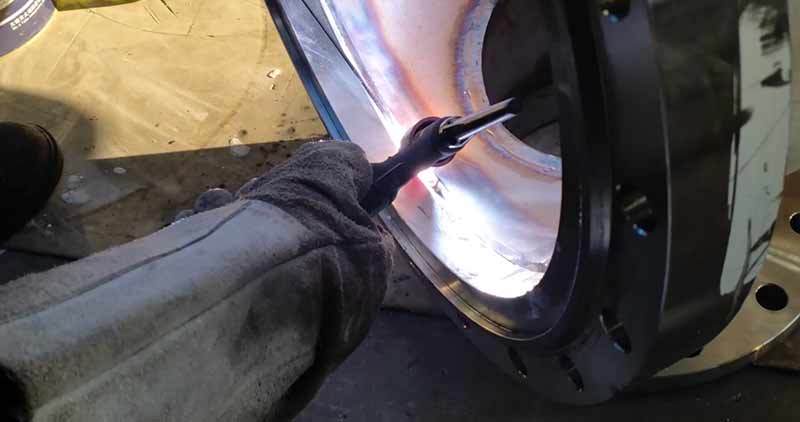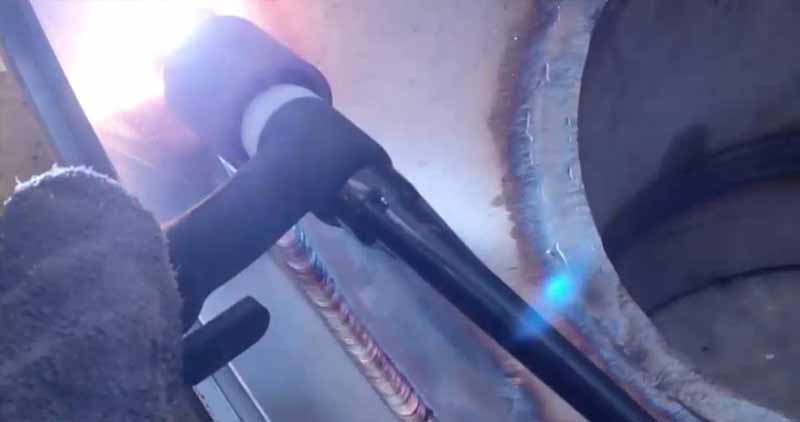What are the measures to solve the burn-through and deformation of stainless steel plate welding?

The most difficult problem of thin stainless steel welding is welding penetration and deformation:
The stainless steel sheet has a low degree of restraint. It is locally heated and cooled during the welding process. It forms uneven heating and cooling. The weldment will produce uneven stress and strain. The longitudinal shortening of the weld will exert more than a certain pressure on the edge of the sheet. When the value is higher, serious wave-like deformation will occur, which will affect the shape quality of the workpiece.
The main measures to solve the burning through and deformation of stainless steel sheet welding are:
01
Strictly control the amount of heat input on the welding joint, select the appropriate welding method and process parameters (mainly welding current, arc voltage, welding speed);
02
Usually smaller nozzles are generally used for thin plate welding, but we recommend using as large a nozzle diameter as possible, so that the welding seam protection surface during welding can be larger, which can effectively isolate the air for a longer time, and make the welding seam form better resistance. Strong oxidation ability.
03
With φ1.5 cerium tungsten pole, the sharpness of the grinding should be sharper, and the length of the tungsten pole stick out of the nozzle should be as long as possible, which will make the base material melt faster, that is to say, the melting temperature rises more. Faster, the temperature will be more concentrated, so that we can melt as quickly as possible at the location that needs to be melted, and will not let the temperature of more mothers rise, so that the area where the internal stress of the material changes is smaller, and ultimately the material The deformation will also be reduced.

04
Choosing a reasonable welding sequence is particularly important for controlling the welding residual deformation. For symmetrical welded structures, symmetrical welding should be used as much as possible; for asymmetrical structures, the one with fewer welds first, and the one with more welds later side. The deformation of the back welding is sufficient to eliminate the deformation of the front side to reduce the overall deformation.
05
The assembly dimensions strive t be accurate, and the interface gap is as small as possible. If the gap is larger, it is easy to burn through or form a larger welding bead;
06
Hardcover fixtures must be used, and the clamping force is evenly balanced.
The key to welding stainless steel sheets is to strictly control the heat input on the welded joints, and strive to minimize the heat input on the premise that the welding can be completed, thereby reducing the heat affected zone, and avoiding the above defects.
The best thing about stainless steel sheet is that it can be welded by laser welding 0.1mm, and the laser spot size can be adjusted arbitrarily, which can be well controlled. There is no deformation ratio.

